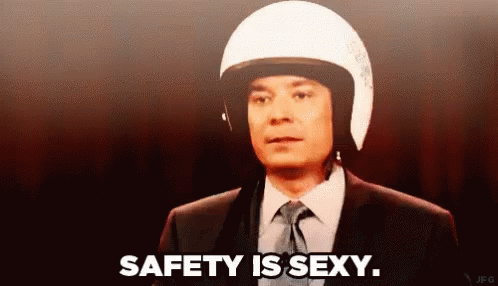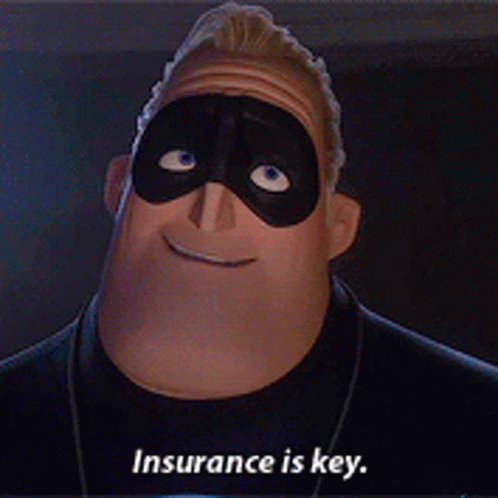The Impact of Vehicle Safety Ratings on Your Insurance Cost

When it comes to buying a car, safety is always a top concern. But did you know that your car's safety rating can impact more than just your peace of mind on the road? Many insurance companies take into consideration the vehicle's safety rating when determining the cost of your insurance premium. It makes sense, right? Safer cars are less likely to be involved in accidents, resulting in fewer claims and ultimately, lower expenses for insurance companies. That's why if you're interested in lowering your insurance premiums, it's important to consider the safety ratings of the cars you're looking to purchase. It's also a good idea to research the various insurance plan coverage types and potential discounts available. Together, these factors can help you make an informed decision on the best insurance plan for you and your car.
Why Vehicle Safety Ratings Matter

When it comes to buying a car, there are many factors to consider. From gas mileage to aesthetics, it's easy to get caught up in the excitement. However, one factor that should never be overlooked is safety ratings. These ratings are crucial for several reasons. They provide insight into a car's ability to protect passengers in accidents and can impact insurance premiums.
That's where LUNA comes in. LUNA is a comprehensive car safety platform that helps you make informed decisions. By seamlessly integrating with your car search, LUNA provides detailed safety ratings and analysis. With LUNA, you can prioritize safety when car shopping and potentially save money on insurance premiums. Visit LUNA's website today to make a smart choice for your next car purchase.
What Are Vehicle Safety Ratings?

Vehicle safety ratings are an important factor to consider when purchasing a car. These ratings measure the safety features of a vehicle, including crash test results, safety technology and other factors that can significantly reduce the risk of accidents and injuries. Institutions such as the Insurance Institute for Highway Safety (IIHS) and the National Highway Traffic Safety Administration (NHTSA) are responsible for rating vehicles on their safety features. These ratings are taken into consideration by car insurance companies when calculating a driver's insurance premium.
With the right safety features, drivers can receive insurance discounts and have greater coverage plan types available to them. When looking to buy a car, it is essential to check out the safety ratings and ensure you are making a safe and affordable purchase.
How Are Ratings Determined?

Car accidents can be frightening and dangerous, but luckily, there are steps you can take to protect yourself and your loved ones. One of these steps is to make sure your vehicle has a good safety rating. So how are these ratings determined? Well, it's a thorough process that includes several different factors and tests. One important component is crash testing, where a vehicle is put through various simulations to see how it would hold up in a collision.
Safety features are also evaluated, such as airbags, seat belts, and electronic stability control. The results of these tests are then analyzed and assigned a rating by organizations like the National Highway Traffic Safety Administration or the Insurance Institute for Highway Safety. This information is important for car insurance companies to consider when creating insurance plan coverage types and insurance discounts, as it helps them determine the potential risk and cost of insuring a particular vehicle. By choosing a car with a good safety rating, you may be able to secure a lower insurance premium and greater peace of mind on the road.
The Direct Impact on Insurance Premiums

When it comes to car insurance, there are a number of factors that can affect your overall coverage and insurance premium. One key factor that insurance companies take into account is vehicle safety ratings. Cars that receive high safety ratings are often considered to be less risky to insure, resulting in lower insurance premiums. In fact, a recent study found that cars with higher safety ratings can reduce insurance premiums by up to 20%. This makes sense - if your car is less likely to be involved in an accident, the insurance company is less likely to have to pay out for damages.
Additionally, car manufacturers who prioritize safety can help you save money in other ways, such as offering discounts on insurance premiums or providing additional coverage options. If you're in the market for a new car and want to save on insurance costs, consider looking at vehicles with high safety ratings. Want to know exactly how much you could save? Be sure to get a free insurance quote now to compare your options and find the best insurance plan coverage types and discounts for you.
Rating Systems and What They Mean for You

If you're in the market for a new car, you may have heard terms like IIHS's Top Safety Pick or NHTSA's 5-Star Safety Ratings thrown around, but what do they really mean for you as a car owner? Well, these rating systems are designed to give you an idea of a vehicle's safety features and performance in crash tests. The IIHS's Top Safety Pick includes crashworthiness, crash avoidance and mitigation, and headlights in their evaluations, while the NHTSA's 5-Star Safety Ratings take into account frontal, side, and rollover crashes.
In practical terms, a higher rating means that the car has been deemed safer in various scenarios, and can potentially lead to lower car insurance premiums and discounts on your insurance plan coverage types. Not to mention, being a responsible car owner by choosing a vehicle with higher safety ratings can give you peace of mind on the road. So, before making your next car purchase, be sure to take a look at the safety rating to ensure that you're making the best choice for you and your wallet.
Tips for Leveraging Vehicle Safety Ratings in Your Insurance Search
Finding the right car insurance can feel like a chore, but a simple trick can make it less daunting - just start by checking out the safety ratings of the cars you have in mind. When you opt for a safer car, not only do you ensure a smoother ride but you might also snag some cool discounts on your insurance premium, thanks to the high safety ratings or certain safety features. Over at LUNA, we're all about helping you discover the insurance plan that's just the right fit for your pocket and your lifestyle. So, diving into safety ratings before choosing can be your shortcut to saving some bucks and driving safe. And don't forget, while on the hunt for that perfect plan, make sure to check the coverage types to find the best match for your needs. Wanna know more? Click here and see how LUNA can guide you to an insurance plan you'll love.

Real-World Examples
When shopping for a new car, safety ratings are an important factor to consider. Not only do you want to protect yourself and your passengers, but higher safety ratings can also lead to lower insurance costs. For example, the Subaru Ascent, Honda Odyssey, and Hyundai Santa Fe have all received top safety ratings and have average insurance costs ranging from $1,300 to $1,600 per year. On the other hand, cars with lower safety ratings can result in higher insurance premiums. The Jeep Wrangler, Nissan Versa, and Mitsubishi Mirage all have lower safety ratings and their average insurance costs range from $2,000 to $2,300.
It's important to note that your insurance plan coverage types and any insurance discounts you may qualify for can also affect your premium. However, when considering safety ratings, it's clear that investing in a car with high safety ratings can not only protect you and your passengers but can also potentially save you money in the long run on your car insurance premiums.
What If Your Car Isn't a Top Performer in Safety Ratings?
While having a top-performing car in safety ratings may be ideal, it's not always feasible for everyone. But that doesn't mean you have to compromise your safety on the road. There are still options available to you, even if your car doesn't have the best safety ratings. One option is to see if you can lower your car insurance costs by adding extra safety features. These features may include things like blind spot monitoring, lane departure warning, or collision avoidance systems, which can potentially lower your insurance premium.
It's also important to explore different insurance plan coverage types and discounts that might be available to you. Don't compromise on safety. If you're concerned about the safety of your car, consider upgrading its safety features today.
How LUNA Can Help

LUNA, a modern insurance provider, has a unique approach to car insurance that is both convenient and cost-effective. LUNA specializes in finding the best insurance options based on vehicle safety ratings, ensuring that their clients have proper coverage and peace of mind while on the road. Luna's user-friendly app, backed by expert advice, offers comparative quotes quickly, saving an average of $597 per year. As an online brokerage, Luna provides transparency and multiple carrier quotes, allowing users to find the best insurance plan coverage types for their needs. Luna's licensed agents ensure fair pricing and work to secure discounts on insurance premiums for their clients. They offer personalized service, keeping all insurance documents organized in one place, showcasing their industry expertise and commitment to quality service. If you're looking for an insurance provider dedicated to your safety and savings, LUNA is a great option.
When it comes to owning a car, there are many factors to consider. However, safety should always be at the forefront of our minds. Not only does choosing a car with good safety ratings provide peace of mind while on the road, but it can also affect your car insurance premiums. Insurance companies take vehicle safety into account when determining coverage types and discounts, as safer cars result in fewer accidents and claims. By prioritizing safety in both your choice of car and insurance plan, you are not only protecting yourself and others on the road, but also potentially saving money in the long run. Always remember, a little extra research into vehicle safety ratings is worth the effort for the added protection.
